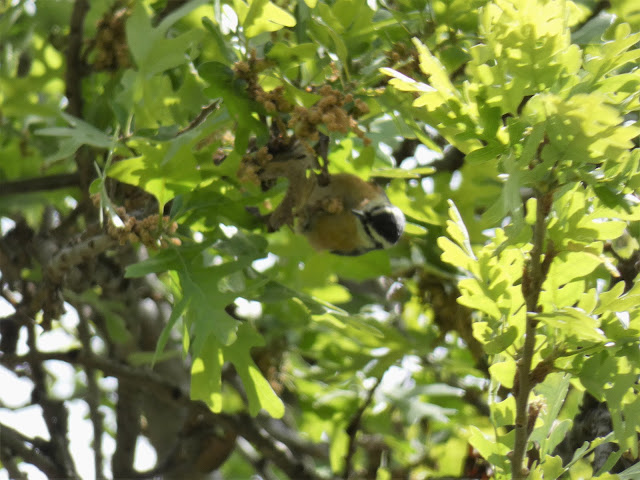Look! Up in the sky! It's a bird! No, it's a plane! No, it's Superman! Oh, it's actually a bird. But it's a new one, one that I haven't noted before on the Tuolumne River Parkway Trail. It started yesterday when I saw a white bird across the river over the pond at the west end of the trail. White birds on this part of the Tuolumne are almost always egrets, but this one was dipping and soaring like no egret I've ever seen. And it was a lot faster.
I then thought it must be a gull of some sort, but it still didn't seem right. I commenced taking a series of hopeless pictures from a quarter mile away hoping that I might figure out what it was. I struggled with the computer to try and bring out some diagnostic features out of the visual static, and finally settled on Forster's Tern (
Sterna forsteri) as an identification. There are several similar-looking terns, but I thought I could see a long forked tail in the fuzzy pictures, and that was it. I figured I wouldn't see anymore since I've been walking the trail for three years and never seen one before.
So I went out this morning and there were
five of them! And they weren't just over the distant pond, they were also soaring over the river itself, almost overhead. So I had the challenge of trying to focus the camera on fast-moving birds. I got a few shots, enough to confirm what I thought I saw the previous day.
Forster's Terns are a purely North American species, spending winters in Mexico, and migrating north across the United States to breeding grounds in the Pacific Northwest states and southern Canada. They've been seen all over California in shoreline and delta habitats, but are not particularly common in the Central Valley. They've been seen most often at the local reservoirs like Turlock Lake and Woodward Reservoir.
The Tuolumne Parkway Trail is sort of a new birding environment. A number of county bird experts have kayaked the river, but it wasn't until the city completed work in the trail two years ago that birders could easily access the river habitat. To say I had no idea how diverse our habitat is would be a major understatement. In just two years,
they've sighted 102 species! There have been 306 species sighted in Stanislaus County, so there is a lot of potential for future discoveries (the single most productive birding hotspot in the county is at the Modesto Water Treatment plant, with 229 species so far). I've seen 78 of the species on the Tuolumne Parkway Trail, so I've still got some work to do.
The orange and yellow invasion of migrant species is at a lull. I'm still hoping to see a Hooded Oriole or a Varied Thrush on some occasion, but in the meantime I'll keep my eyes open for more surprises.




















































